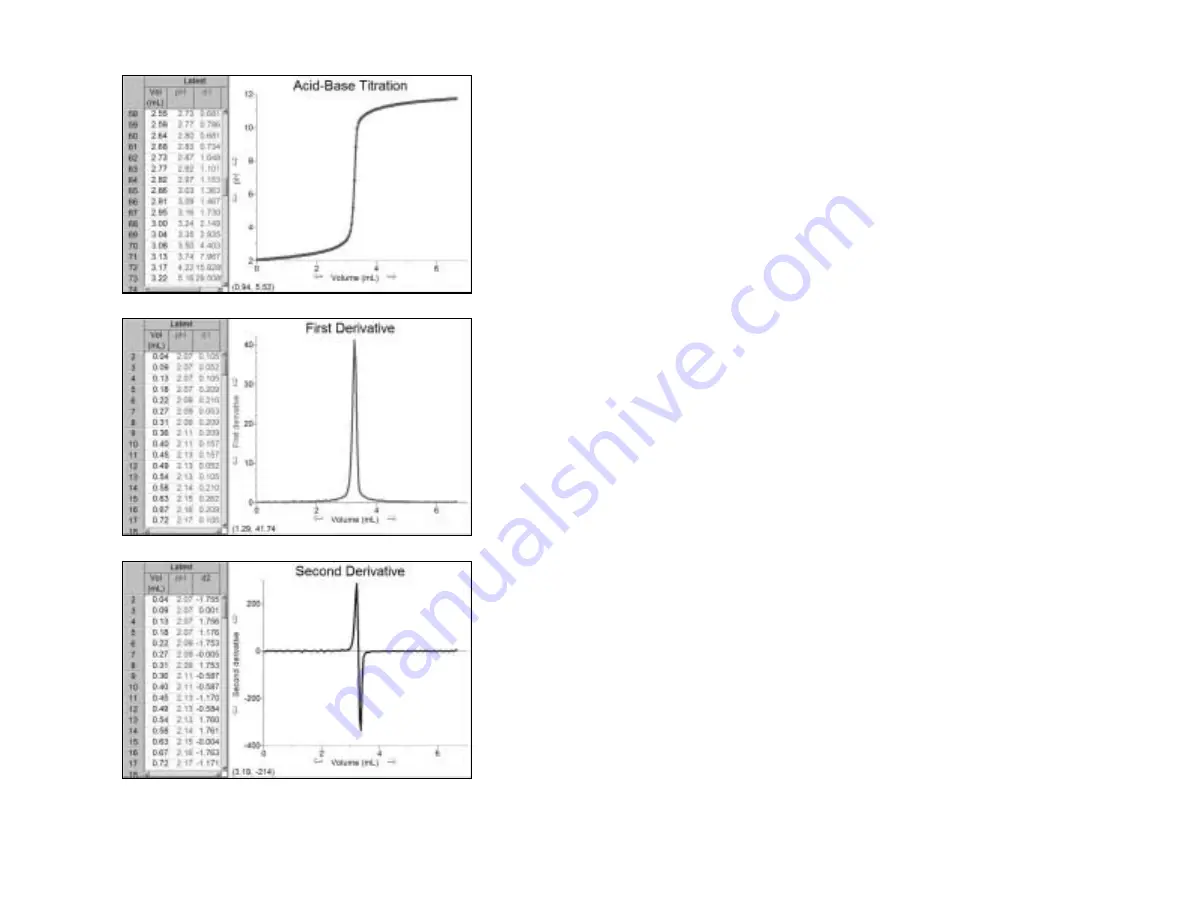
7
Typical Titration Data
8
Helpful Tips for Using the Vernier Drop Counter
•
It is important to remind students that a slow drip rate (two seconds per drop or
slower) is important. This provides enough time for the drop to be added to the
solution and thoroughly mixed, and the pH (or other sensor) to respond. When
passing through the equivalence point, without adequate stirring after addition
of drops of titrant, you may see a resulting delay or lag. Even if this lag is barely
noticeable in the pH
vs.
volume graph, it will be more apparent in the follow-up
first or second derivative graphs. Following some or all of these tips will reduce
or eliminate this error.
•
It is also helpful if the amount of titrant in the beaker is minimized. Less liquid
means faster mixing. This is why we recommend using a 100 mL beaker instead
of a 250 mL beaker whenever possible.
•
Using the Vernier Microstirrer helps deliver solution directly to the pH bulb,
increasing response to a fresh drop.
•
Add only as much distilled water to the solution being titrated as is necessary to
cover the bulb of the pH Sensor (or other electrode). If you are using a 100 mL
beaker and a small stirring bar, you may need as little as 15-20 mL of solution.
If you use the Vernier Microstirrer, you will need more solution to cover the
bulb (35–40 mL), but you may get better mixing.
•
Using the plastic reagent reservoir that is supplied with the Drop Counter,
instead of a standard buret, provides a wider diameter and less change in the
hydrostatic pressure per unit volume of titrant above the 2-way valve.
•
Another advantage of using the plastic reagent reservoir is the pair of 2-way
valves, using one for drop rate adjustment, and the other as an on-off valve. This
eliminates the need to do a fine adjust during the initial readings, and also
allows the user to set a consistent rate, along with a calibration of drops/mL.
•
If you want to allow for more thorough mixing when you are near the
equivalence point, you can also manually release drops at a slower rate for that
region of data.
Using other Sensors with Drop Counter
Vernier Drop Counter can be used with other Vernier sensors such as our Ion-
Selective Electrodes, Conductivity Probe, or older Vernier pH Sensors that do not
auto-ID. It can accommodate third-party electrodes when used in conjunction with
our Electrode Amplifier. It can also take simultaneous pH and temperature readings,
as shown here. To use any of these other sensors, use the following instructions.
























